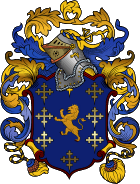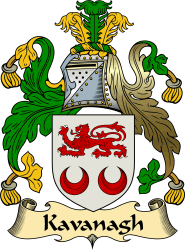|
|
Search

|
  Home Home
|
  Surname Surname
|
  First Name First Name
|
Popular Products

|
  Coat of Arms Coat of Arms
|
  Clan Badges Clan Badges
|
  Books & Gifts Books & Gifts
|
  Celtic Jewelry Celtic Jewelry
|
  Black Shirts Black Shirts
|
  CD Music CD Music
|
  Download Download
|
 Design Gallery
Design Gallery

|
  Irish Irish
|
  Flags Flags
|
  Celtic Celtic
|
  Tartans Tartans
|
  Scottish Scottish
|
  Claddagh Claddagh
|
  Surnames Surnames
|
  Highlander Highlander
|
  Celtic Radio Celtic Radio
|
Research

|
  History History
|
  Country Country
|
  Families Families
|
|
|
|
|
 All of our products can be order in bulk for family reunions and get-togethers. Depending on the number of items ordered, we can offer bulk orders at reduced prices for incredible savings from individual items. We also offer embroidered Clan Badge and Coat of arms patches in bulk orders for all of your family and clan festivals. Don't see your Clan Badge or Family Coat of Arms or do you have a special customized order? Please contact us with your special order details and we will be happy to setup a free quote.
|
|
Our Heraldry Database has thousands of Family histories to search. Visit Now!
Jordan

Coat of Arms
.....
|
|
|
Heraldry Database: Kavanagh
Kavanagh

|
|


Surname: Kavanagh
Branch: Kavanagh
Origins: Irish
More Info: Ireland
|
|
Background: The surname Kavanagh or Cavanaugh and the other variants of the name are derived from the adjectival Irish Gaelic name Caomhánach. This was the name applied to Domhnall, eldest son of the 12th century King of Leinster Diarmait mac Murchada (Dermot MacMurrough). Domhnall was fostered, according to Irish custom, by the family attached to the monastery of St. Caomhan at Kilcavan in the Barony of Gorey, County Wexford. He thus became known as Caomhánach. His brother Eanna became known as Eanna Ceinnsealach, also an adjectival name derived from the Clan and its territory. Eanna became the progenitor of the Kinsella Clan. The word Caomh signifies "gentle" or "comely" in Gaelic. As an incentive to the Norman commander Richard de Clere, Earl of Strigoil (and previously Earl of Pembroke, a title which Henry II had deprived him of) Diarmaid McMurrough had given him his daughter Aoife in marriage. De Clere was commonly known as "Strongbow". Despite the fact that under Irish (Brehon) law, the Kingship could not be passed on this manner via marriage, Strongbow subsequently used this marriage to attempt to establish a claim on the kingship of Leinster, following the death of King Dermot MacMurrough in 1171AD. However the Irish chiefs adhered to the traditional Gaelic legal system and Domhnall Caomhanach was subsequently elected as King. While the exact place and manner of Domhnall's death is unclear, the general opinion of historians is that he was assassinated at the behest of the Normans as he was drumming up support for war against them.
|
 Motto: Motto: Siothchain Agus Farisinge, Peace And Plenty. Arms: Silver, a red lion passant, and in base two red crescents. Crest: Out of Silver crescent a gold wheatsheaf. View the Heraldry Dictionary for help.

Kavanagh is one of the very few ancient Gaelic Irish surnames which has neither the prefix Mac or O: it is wrong to
call it O Caomhanach in Irish as is sometimes erroneously done. In Irish it is simply Caomhanach which is an
adjective denoting assocation with Caomhan, in this case St. Caomhan, the first Kavanagh having been fostered by a
successor of that saint. It was not customary for such epithets to be perpetuated, as happened with this branch of
the MacMurroughs. The first Kavanagh was Donal son of Dermot MacMurrough, King of Leinster, who was one of the
prominent figures in Irish history, being the immediate cause of the Anglo-Norman invasion. The Kavanagh territory
lay then in Counties Wexford and Carlow and they contained to be extensive landowners there up to recent times. The
name is very numerous in and around County Wexford in all classes of society, so much so indeed that there are enough
Kavanaghs in the south-eastern counties of Leinster by themselves, without counting the scattered Kavanaghs in the
rest of the country, to put the name in the list of eighty commonest surnames in the country: all told they hold
fifty-third place in that list.
The agnomen Kavanagh was long associated with the MacMurroughs, Art Mac Murrough, the King of Leinster who put so
determined a resistence to Richard II of England, being styled Kavanagh. The Kavanaghs themselves have produced a
number of notable figures, none more picturesque than Arthur MacMurrough Kavanagh (1831-1889), who, although he had
only stumps of arms and legs, overcame the disability and became an expert horseman and fisherman, learned to write
and draw and was for many years a Member of Parliament. In the same century Morgan Peter Kavanaugh (1800-1874) and
his daughter Julia Kavanagh (1824-1877) were well known authors in their day. Going back to the sixteenth century
there was Cahir Mac Art Kavanagh (1500-1554), who took part in the Geraldine rebellion, and Art Kavanagh, who was
Hugh O'Neill's companion in the dramatic escape from Dublin Castle in 1590. In the next century we find Brian
Kavanagh, one of the many Kavanaghs who fought for the Stuart cause described as the tallest man in King James' army;
while amoung the Wild Geese of the name Morgan Kavanagh, who rose to be Governor of Prague in 1766, was said to be
the biggest man in Europe. Several Kavanaghs were officers in the Irish Brigade in the army of France and a branch of
the family settled in that country, but it was in Austria they chiefly distinguished themselves. Two were prominent
in 1798 - Rev. Francis Kavanagh, who was one of the leaders of the inssurection in County Wexford, and Walter
Cavanagh of Borris, County Carlow, nicknamed by the people "the monarch", whose house was burned down by insurgents.
The well-known song "Eileen Aroon", said to be composed by Carol O'Daly in the thirteenth century, should be
mentioned in connexion with this family, the Eileen invoked being the daughter of the Kavanagh chief of the time.
Kavanagh is sometimes used as a synonym for two often quite distinct surnames, affording an example of the not
uncommon process of attraction whereby some well known patronymic of somewhat similar sound is assumed in place of
the original name. O Caomhain, anglice O'Keevan and Kevane, once as important sept in Mayo, where is has also been
maladroitly turned into Cavendish, is one; the other is O Caibhdeanigh of Ossory, an obsolete form of Gaffney.
Name Variations: Kavanagh, O'Kavanagh, Caomhanach, O'Caomhanach, Caomhan, MacMurroughts, Cavanagh, O'Keevan, Kevane, Cavendish, O' Caibhdeanigh, Caibhdeanigh, Cavanagh, Kavanagh, Kavanah, Cavanaugh, Keevan, Cavanaw, Kavanaw, Cavenaugh, Cavanough, Cavaneagh, Cavana, Cavena, Cavinaugh, Kavina, Kavena, Kavanaugh, Cavanach, Kavanach, Cabenagh, O'Cavanagh, O'Kavanagh, Keaveney, Geaveney, M'Cavanna.
References:One or more of the following publications has been referenced for this article.The General Armory; Sir Bernard Burke - 1842.
A Handbook of Mottoes; C.N. Elvin - 1860.
Irish Families, Their Names, Arms & Origins; Edward MacLysaght - 1957.
The Surnames of Ireland; Edward MacLynsaght - 1957.
The Book of Irish Families Great and Small.
kavanaghfamily.com


Sign-up for a Founders account and receive personalized
family heraldry service and much more!

Want to know more?
Click the Heart!
|
|
|



